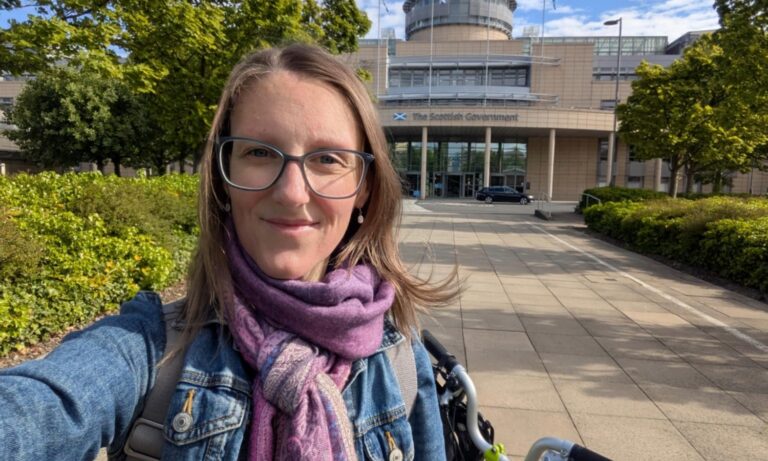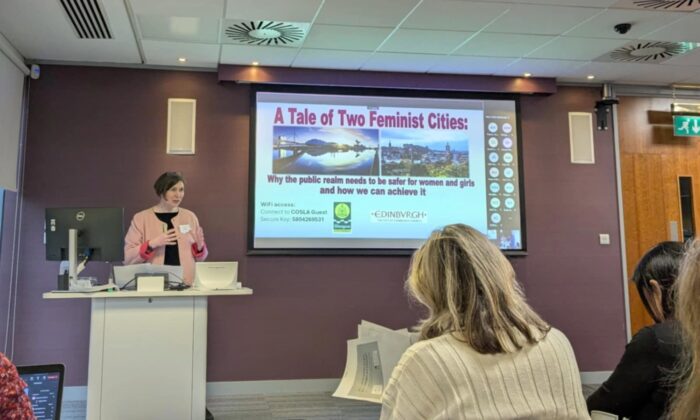
Earlier this year, Sandra Lavergne attended an event organised by City of Edinburgh Council and Glasgow City Council called ‘A tale of two feminist cities’ which explored some of the issues our public spaces can cause and how feminist design can make our cities, towns and villages safer and more inclusive for everyone. In this blog, Sandra talks about what she learnt at this event.
The Tale of Two Feminist Cities event was organised by the City of Edinburgh Council and Glasgow City Council and brought together people working in a range of areas including gender equality, public health, urban planning and violence prevention. The main purpose was to explore how public spaces have been created. And the event really highlighted to me that, on the whole, they have been designed by and for men. But this approach overlooks the needs of women and gender minorities.
This approach leads to challenges, for example:
Some of the stats shared at the event were particularly striking. A consultation by the Equally Safe Edinburgh Committee in 2023 asked women what made them feel unsafe in public spaces, both in summer and winter. The two main answers to this were the behaviour of men and the behaviour of young people. This shows how urgent a culture change is needed if we want to tackle gender inequality.
Another alarming insight from the consultation was that between 73% and 80% of women have experienced some sort of harassment, abuse or violence in a public space in Edinburgh.
 Something needs to change to make our public spaces safer for everyone, and it was great to hear about some of the initiatives taking place to tackle this issue. We heard about the #RespectHerSpace campaign, led by the City of Edinburgh Council. This campaign is raising awareness of the issues that impact women’s safety and perception of safety by encouraging respectful and more thoughtful behaviour by men. And we’re proud to have supported this work through our People and Place programme in 2024/25.
Something needs to change to make our public spaces safer for everyone, and it was great to hear about some of the initiatives taking place to tackle this issue. We heard about the #RespectHerSpace campaign, led by the City of Edinburgh Council. This campaign is raising awareness of the issues that impact women’s safety and perception of safety by encouraging respectful and more thoughtful behaviour by men. And we’re proud to have supported this work through our People and Place programme in 2024/25.
One of my key takeaways from the event was how significant the changes would be if the norm shifted to allow public space to be planned and designed through a feminist lens. This approach would not only create better and safer places for women but would benefit everyone. The City of Edinburgh Council have produced a tool which looks at design principles for women’s safety in public spaces. It has three core themes: layout and legibility, usability and comfort and eyes on the street.
Principles include:
At SEStran, through our , we’re committed to supporting transport equity, accessibility and safety. Events like A Tale of Two Feminist Cities remind us that thoughtful design and inclusive planning aren’t just nice ideas – they’re essential if we want our public spaces to truly serve the people who use them.